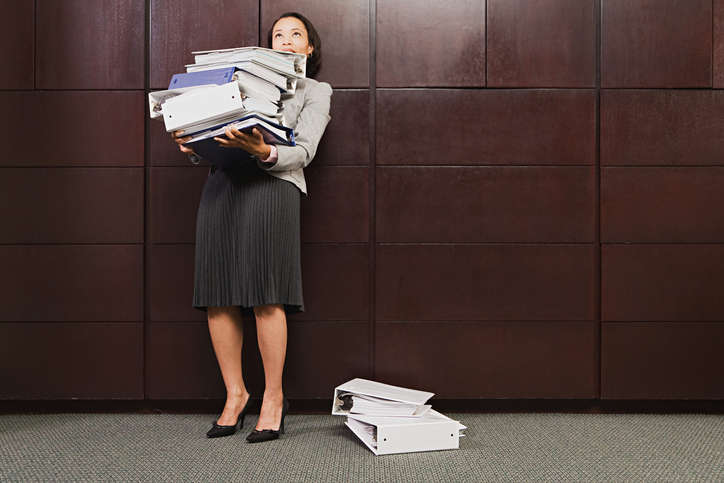Images of construction worksites and factory floors often come to mind when we think of a safety in the workplace. Rarely does an office environment appear first but it is the location of thousands of mild and serious injuries each year. It takes everyone to be vigilant as all office workers are at risk.

Trip & Falls
Workers in traditionally more dangerous work environments like factories and building sites are more safety conscious than most office-based employees. They often don’t see the risks associated with leaving deliveries sitting behind reception or cupboard doors left open. Injuries occur when staff trip, walk into or get caught between objects.
Falls can occur when a floor is wet or slippery so clean up any mess immediately. If carpet or rugs are loose, have them fixed and move items off the floor that people aren’t expecting to be there. Chairs may have wheels on them, but they aren’t for moving yourself to another part of your office. Stand up and walk rather than stretching for an object. Never use a chair to reach items that are up high, ask for a step ladder.
If you are taking the stairs between floors, use the handrail and make sure you aren’t carrying too many items so that you can’t see your feet properly. Remind employees regularly to look out for dangerous situations and either fix them or report it.
Ergonomics
Repetitive strain is an injury; the only difference is that it has taken time to accumulate, rather than occur in a split second like most other accidents. The long hours spent at a desk in front of a computer can be detrimental if the setup isn’t right. Musculoskeletal problems can occur with your neck, shoulders, back and wrists.
Follow these tips for correct posture so you can avoid an injury.
- Sit with your feet flat on the floor or a footrest
- Make sure your thighs are horizontal with the floor
- Sit back in the chair, so your lower back is supported by the chair
- Keep elbows at a 90-degree angle and wrists straight while typing
- Adjust your computer monitor, so you don’t need to look up or down
- Use a light touch on the keyboard
- Adjust the blinds during the day, so there is no sun glare on the screen
Lifting
An injury can still occur when the load being lifted is relatively light. Computer parts, a box of files or stationery can all cause injuries to the back, neck or shoulders. Before lifting anything, check the weight and decide if you should ask a co-worker to assist or proceed using the following tips for safe lifting.
- Squat towards the floor then use your legs not back to straighten up
- Keep the load close to your body
- Use both hands, not just your fingers
- Make sure the load is balanced and carried in front of your body
- To place an item on the floor squat down and bend your knees not back
PeopleSense offers Manual Handling Training to educate workers on the risks in their role and what they can do to control those risks. Occupational Safety and Health Audits and ergonomics assessments are undertaken by PeopleSense’s Occupational Therapists or Exercise Physiologists to minimise employee risk and injury. For details of how these services can benefit your workplace, contact a professional from PeopleSense on (08) 9388 9000 or 1300 307 912.